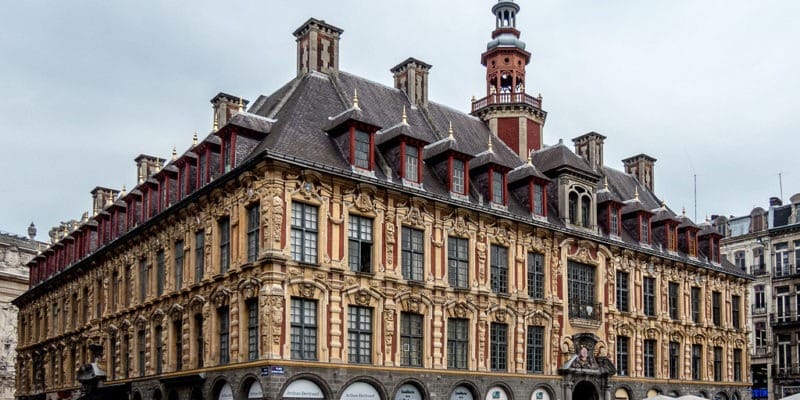Occupying a strategic position in northern France, Lille is a unique destination offering a fascinating blend of history, culture and vitality. With its distinct Flemish architecture, vibrant atmosphere and rich culture, Lille has much to offer anyone lucky enough to visit. This article explores the different facets of this city that make it a must-see destination.
A little history of “Risjel”
Lille’s history began in the middle of the Middle Ages, in the 11th century to be precise, when the city began to grow in importance as a trading center. Thanks to its strategic geographical position, Lille quickly became a flourishing trading city. In the 12th century, construction of the city walls began, contributing to its status as a stronghold. Over the centuries, Lille has often changed hands. The city’s history is marked by the presence of various European powers. The Romans were the first to settle in the region, followed by the Franks. During the Middle Ages, Lille was an important county town in the County of Flanders. The city was then ruled by the Dukes of Burgundy in the 14th century, followed by the Spanish Habsburgs in the 16th century.
This period left a lasting imprint on the city, notably through the Flemish architecture still visible today in Vieux Lille. Spanish influence also helped shape the city’s culture and traditions. In 1667, Lille became French under the reign of Louis XIV, who besieged and conquered the city during the War of Devolution. Vauban, Louis XIV’s famous military engineer, then reinforced the city’s fortifications, giving rise to the Citadelle de Lille , nicknamed the “Queen of Citadels”.
In the 19th century, Lille became a major center of the textile industry and grew rapidly. The city adapted to changing times, evolving from an industrial center to a center of services and innovation in the last decades of the 20th century. Today, Lille is a dynamic metropolis that has not forgotten its historical roots. Every era has left its mark on Lille, whether in architecture, culture or traditions. The city’s rich and varied history has helped create a unique blend of styles and cultures that gives Lille its distinctive charm.
Architecture and Heritage of Lille city
Lille’s architecture is a true testament to the city’s history, reflecting the diversity of its cultural and historical influences.The city’s architectural styles range from the Flemish elegance of Vieux Lille to the modern contemporary buildings of the Euralille district, offering a captivating architectural panorama. Vieux Lille, the city’s historic district, is a true architectural gem. Its picturesque lanes and cobbled squares are lined with Flemish houses with colorful facades and sculptural details.
These houses, often built between the 17th and 18th centuries, feature charming red brick and sandstone facades, embellished with stepped gables and slate roofs. In the heart of Vieux Lille, the Grand’Place (Place du Général de Gaulle) is a sight to behold. Dominated by the Vieille Bourse, a jewel of 17th-century Flemish architecture, and the Column of the Goddess, erected to commemorate the city’s heroic resistance during the siege of 1792, the square is a must-see meeting place for locals and visitors alike. Lille’s Palais des Beaux-Arts is another example of the city’s grandiose architecture.
Built in the 19th century, the Beaux-Arts-style building is one of the largest art museums in France. It houses an impressive collection of works of art, ranging from Antiquity to the 20th century. We highly recommend exploring the Palais des Beaux-Arts in Lille. Notre-Dame-de-la-Treille Cathedral, located in Vieux Lille, is a fascinating blend of architectural styles. Begun in the 19th century and only completed in 1999, the cathedral combines neo-Gothic elements with a modern glass and marble façade. Its light and airy interior, adorned with colorful stained glass windows, offers a striking contrast to its austere exterior.
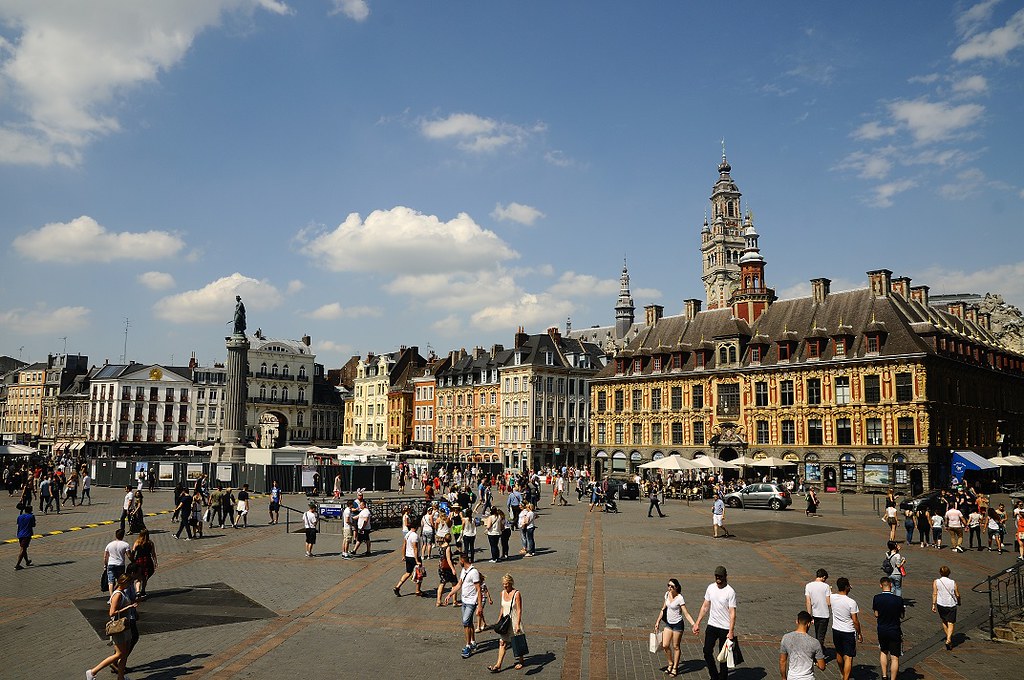
Place du Général-de-Gaulle
Culture and “Art de Vivre” in Lille Town
Lille is a vibrant, dynamic and culturally rich city. This rich culture is reflected in its art and music scene, museums, art galleries, festivals and gastronomy. Lille’s art scene is particularly vibrant. The city is renowned for its many art galleries, exhibiting works by local and international artists. The performing arts are also strongly represented, with a large number of theaters and concert halls, presenting everything from classical music and rock to contemporary theater and dance. Lille’s museums offer a wide variety of exhibitions and collections. The Palais des Beaux-Arts, for example, houses an impressive collection of works of art, while the Musée d’Histoire Naturelle and the Musée de l’Hospice Comtesse offer a fascinating insight into the history of the city and region. The city is also famous for its many festivals throughout the year.
The most famous of these is undoubtedly the Braderie de Lille, Europe’s biggest flea market, which takes place every year on the first weekend in September. For two days, the city is transformed into a huge flea market, where locals and visitors alike can hunt for bargains and sample the traditional mussels and French fries. When it comes to gastronomy, Lille has a lot to offer. The city is renowned for its local specialties, which reflect its Flemish heritage.
Potjevleesch, a white meat pâté in jelly, welsh, a dish made with melted cheddar, beer and bread, and sugar-filled waffles are must-tries. And let’s not forget the local beer, with a wide variety of craft beers to sample.
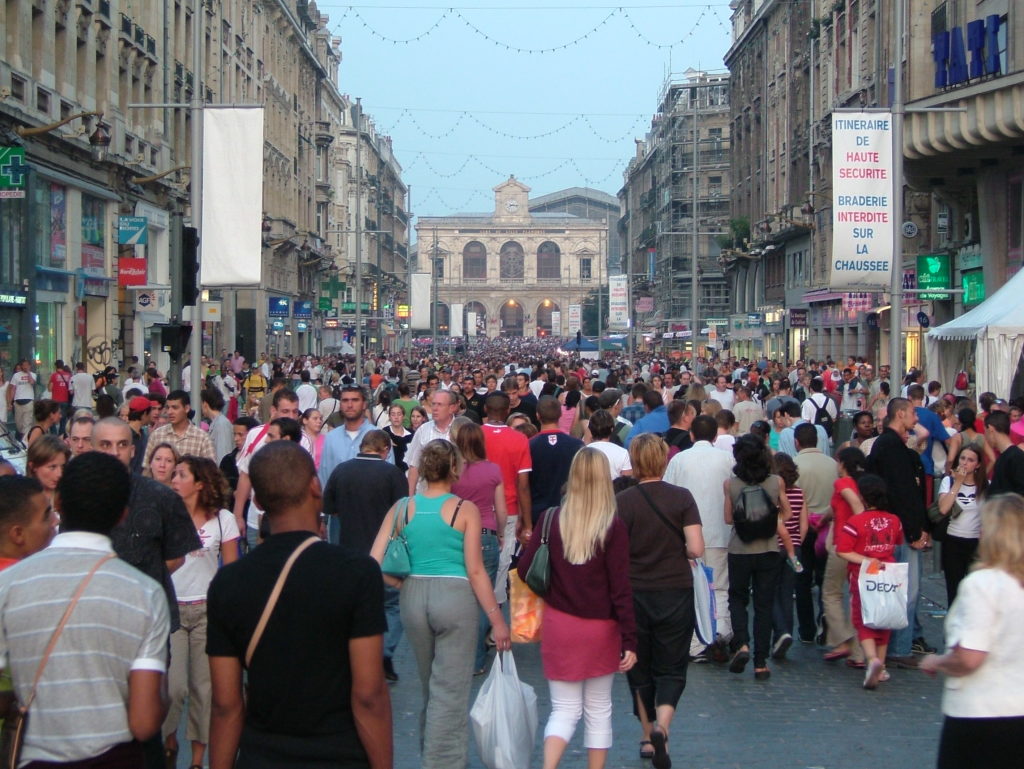
Lille Braderie
A Transport Node
Located at the crossroads between Paris, Brussels and London, Lille is a major transportation hub. Lille Europe station, one of the city’s two main stations, is a major hub for high-speed trains. It offers direct connections to several major European cities. For example, with Eurostar services, London is just an hour and a half from Lille. By TGV, Paris is an hour away, Brussels thirty minutes and Amsterdam less than three hours. Lille Flandres station, the city’s other main station, handles the majority of regional and national connections, particularly to Belgium. Both stations are located in the heart of the city, within walking distance of each other, making it easy to get around. In addition to rail, Lille also has an international airport, Lille-Lesquin Airport. Although smaller than those of some other major French cities, Lille Airport offers regular flights to many destinations in France and Europe. Its proximity to the city center, just 20 minutes away by car, makes it a convenient choice for travelers. Lille also boasts a well-developed public transport network, with two metro lines, two tramway lines and numerous bus routes. The city has set up a self-service bicycle system, V’Lille, offering a practical and environmentally-friendly way to get around the city.
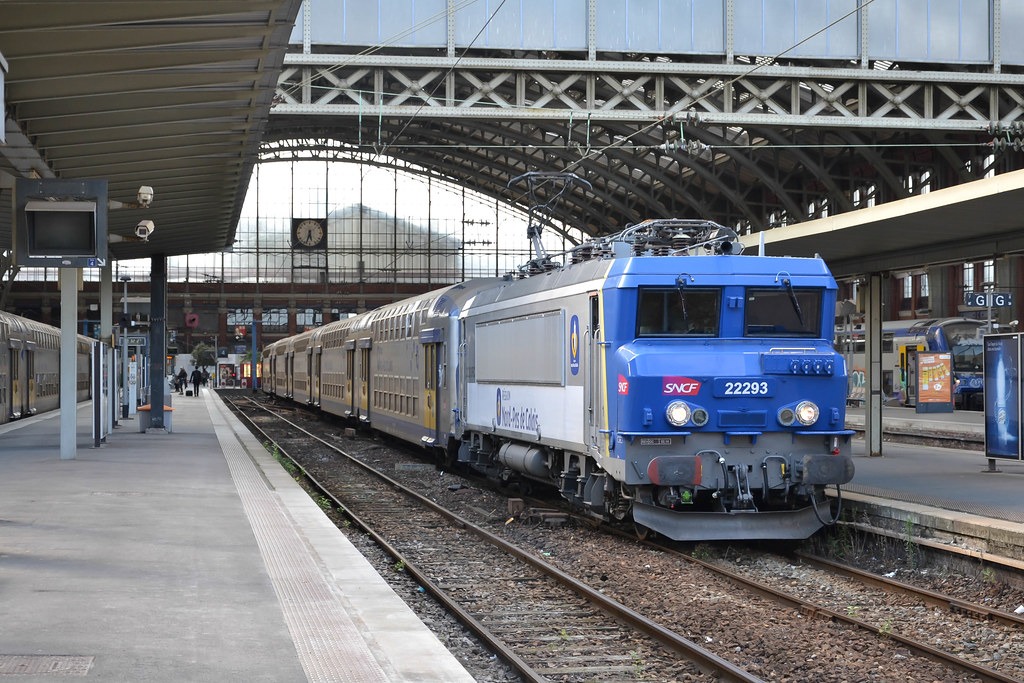
Lille-Flandes station
Education & Research
Lille is a city renowned for its excellence in education and research. With several leading higher education and research institutions, the city is a dynamic academic hub that attracts students and researchers from all over the world. The University of Lille is the city’s largest educational institution and one of France’s largest universities. It offers a wide range of study programs in diverse fields, from the arts and humanities to the natural sciences and technologies.
The university is particularly renowned for its excellence in the humanities, legal and political sciences, and health sciences. It is also a leading research center, with numerous laboratories and research centers contributing to the advancement of knowledge in these fields.
Economy and Industry
Lille’s economy is dynamic and diverse, drawing on a variety of key sectors that reflect the city’s versatility and adaptability. The service sector is particularly strong in Lille, employing a large proportion of the working population. This includes services such as finance, insurance and real estate, as well as a variety of professional, scientific and technical services. Manufacturing remains an important sector in Lille, although its importance has diminished from the days when the city was a major center of the textile industry. The city is a major commercial center, attracting visitors from all over the region and beyond. With a multitude of boutiques, shopping centers and markets, Lille offers a diverse shopping experience. Logistics is another key sector of Lille’s economy, benefiting from the city’s strategic position at the crossroads ofNorthern Europe. Many logistics companies have established distribution centers in the region, taking advantage of its excellent transport network. Lille is a major center for information and communication technologies. The city is home to EuraTechnologies, one of Europe’s largest startup incubators. With a concentration of startups, technology companies and research organizations, EuraTechnologies is a dynamic innovation hub that helps make Lille a forward-looking city.
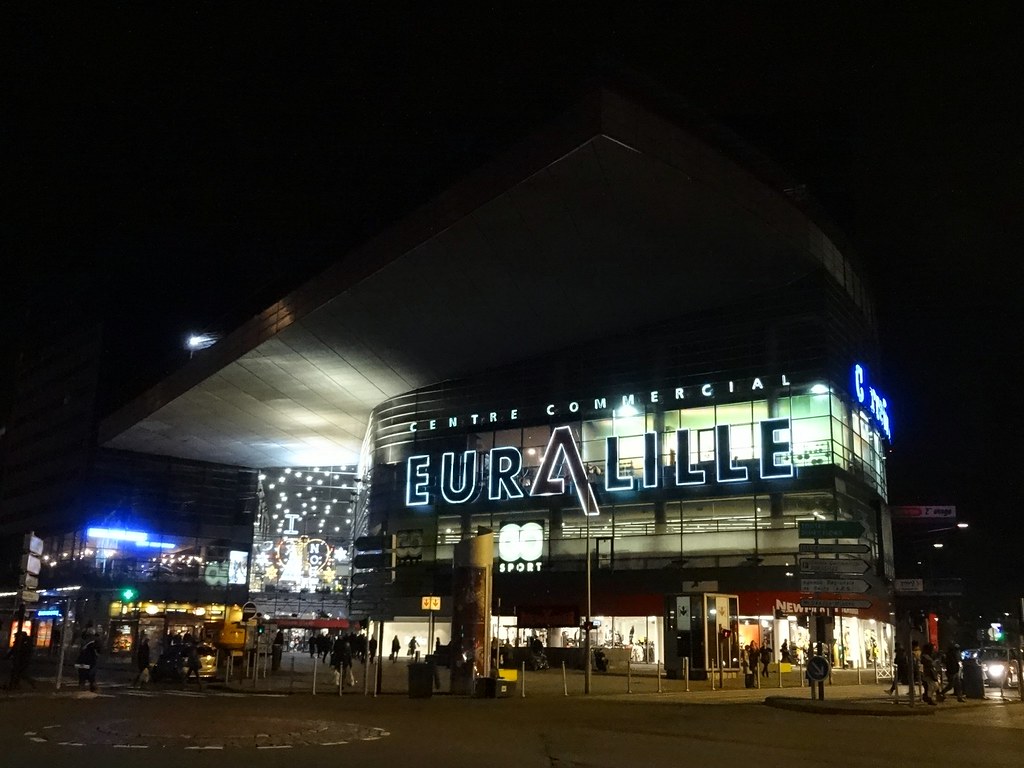
Euralille Shopping Center
Lille’s rich history, cultural diversity and dynamic economy make it an attractive and welcoming destination. Whether you’re a tourist, student or professional, Lille has something for everyone. There’s no doubt that Lille will continue to fascinate and charm visitors for years to come.
Lille’s geographical location
D.A.
